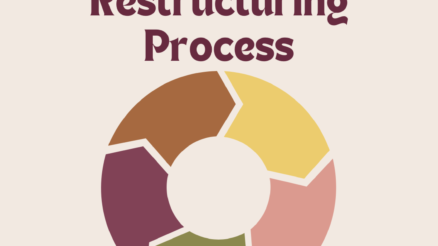SaaS stands for “Software as a Service,” which refers to cloud-based software applications that are hosted and maintained by a third-party provider and accessed over the internet.
SaaS has become increasingly important in modern businesses because it allows organizations to access and use powerful software applications without the need to invest in expensive hardware or to maintain the software themselves.
Instead, they can pay a subscription fee to the SaaS provider and access the software through a web browser or other internet-enabled device.
The growing importance of SaaS has also highlighted the need for effective change management in these environments.
In the context of SaaS, change management is critical because SaaS applications are often integrated with other systems and processes, and changes can have a ripple effect throughout the organization.
The purpose of this blog post is to provide an overview of the SaaS change management process, including its key elements, best practices, and real-world examples.
By reading this post, readers will gain a better understanding of why change management is important in SaaS environments and how they can effectively manage changes to their own SaaS applications.
What is change management and why its critical for successful implementation of SaaS?
Change management is the process of planning, implementing, and managing changes to an organization’s technology, processes, or services. It involves a structured approach to transitioning individuals, teams, and organizations from a current state to a desired future state.
Change management aims to minimize the negative impact of changes and maximize the benefits of the change.
In the context of SaaS, change management is critical for the successful implementation of these applications. This is because SaaS applications are often used to support critical business processes and are integrated with other systems and processes.
Any changes to the SaaS application can have a ripple effect throughout the organization, and can potentially disrupt workflows, impact productivity, or even cause downtime.
Effective change management in SaaS environments involves a structured approach that includes assessing the need for change, identifying stakeholders, planning for the change, communicating the change, providing training and support, and monitoring and evaluating the effectiveness of the change.
By following this process, organizations can effectively manage changes to their SaaS applications and minimize the negative impact of these changes on their business operations.
Without effective change management, organizations may struggle to adopt new SaaS applications, fail to realize the full benefits of these applications, or even experience disruptions to their business operations.
By prioritizing change management and taking a structured approach to managing changes to their SaaS applications, organizations can ensure that their SaaS implementations are successful and sustainable over the long term.
The SaaS Change Management Process
The SaaS change management process involves a structured approach to planning, implementing, and managing changes to an organization’s SaaS applications. The key steps of this process include:
Assessing the need for change
The first step in the SaaS change management process is to assess the need for change. This involves identifying the reason for the change and the potential impact of the change on the organization and its stakeholders.
Identifying stakeholders
Once the need for change has been identified, the next step is to identify the stakeholders who will be impacted by the change. This includes both internal stakeholders (such as employees and managers) and external stakeholders (such as customers and vendors).
Planning for the change
The planning phase involves developing a plan for implementing the change. This includes defining the scope of the change, developing a timeline and budget, and identifying the resources and personnel needed to implement the change.
Communicating the change
Effective communication is critical to the success of any change management initiative. This involves communicating the need for the change, the scope of the change, and the timeline and budget for the change to all stakeholders.
Providing training and support
In order for the change to be successful, stakeholders will need to be trained on how to use the new SaaS application or process. This may involve developing training materials, providing one-on-one training sessions, or offering online training resources.
Monitoring and evaluating the effectiveness of the change
The final step in the SaaS change management process is to monitor and evaluate the effectiveness of the change. This includes collecting data on the impact of the change on the organization and its stakeholders, identifying any issues or challenges that arise during the implementation, and making any necessary adjustments to the change plan
Real-world examples of successful SaaS change management implementations
There are many real-world examples of successful SaaS change management implementations. Here are a few examples:
Airbnb
Airbnb is a popular online marketplace that connects travelers with hosts who offer unique accommodations. In 2015, Airbnb switched to a new SaaS accounting software, which required significant changes to its accounting processes. To ensure a smooth transition, Airbnb developed a comprehensive change management plan that included stakeholder engagement, process mapping, training, and post-implementation support. As a result, Airbnb was able to successfully transition to the new software without any major disruptions to its business operations.
General Electric
General Electric (GE) is a multinational conglomerate that produces a wide range of products, including aircraft engines, healthcare equipment, and power plants. In 2017, GE announced that it would be transitioning to a cloud-based SaaS platform for its human resources (HR) processes. The change involved moving all HR processes to the new platform, including talent management, payroll, and benefits administration. To ensure a successful transition, GE developed a change management plan that included extensive communication, training, and support. The transition was completed on time and under budget, and GE was able to achieve significant cost savings and improve the efficiency of its HR processes.
MailChimp
MailChimp is an email marketing platform that helps businesses to create and manage email campaigns. In 2018, MailChimp decided to switch to a new SaaS marketing automation platform. To ensure a smooth transition, MailChimp developed a change management plan that included stakeholder engagement, user training, and a phased rollout. The transition was completed without any major issues, and MailChimp was able to achieve significant improvements in its marketing automation capabilities, resulting in increased customer engagement and revenue growth.
Analysis of what made these implementations successful
There are several key factors that contributed to the success of the SaaS change management implementations mentioned in the previous answer. Here are some common themes across these implementations:
Comprehensive change management plan
In all three cases, the organizations developed comprehensive change management plans that included stakeholder engagement, process mapping, training, and post-implementation support. These plans provided a clear roadmap for the change and helped to minimize the negative impact of the change on the organization.
Effective communication
Effective communication is critical to the success of any change management initiative. In all three cases, the organizations communicated the need for the change, the scope of the change, and the timeline and budget for the change to all stakeholders. This helped to ensure that everyone was on the same page and understood the goals of the change.
User training and support
In all three cases, the organizations provided user training and support to ensure that stakeholders were comfortable with the new SaaS applications or processes. This helped to minimize the risk of errors and user resistance, and ensured that the new systems were used effectively.
Phased rollout
In some cases, the organizations implemented the change in phases rather than all at once. This helped to minimize disruption and allowed the organization to identify and address any issues before rolling out the change to the entire organization.
Continuous monitoring and evaluation
In all three cases, the organizations continuously monitored and evaluated the effectiveness of the change. This allowed them to identify and address any issues or challenges that arose during the implementation and make any necessary adjustments to the change plan.
Final Words
The SaaS change management process involves several key steps, including stakeholder engagement, process mapping, user training, and post-implementation support. By following these steps and developing a comprehensive change management plan, organizations can successfully transition to new SaaS applications and achieve significant improvements in their business operations. Real-world examples of successful SaaS change management implementations, such as those at Airbnb, GE, and MailChimp, illustrate the importance of effective change management in SaaS environments.



